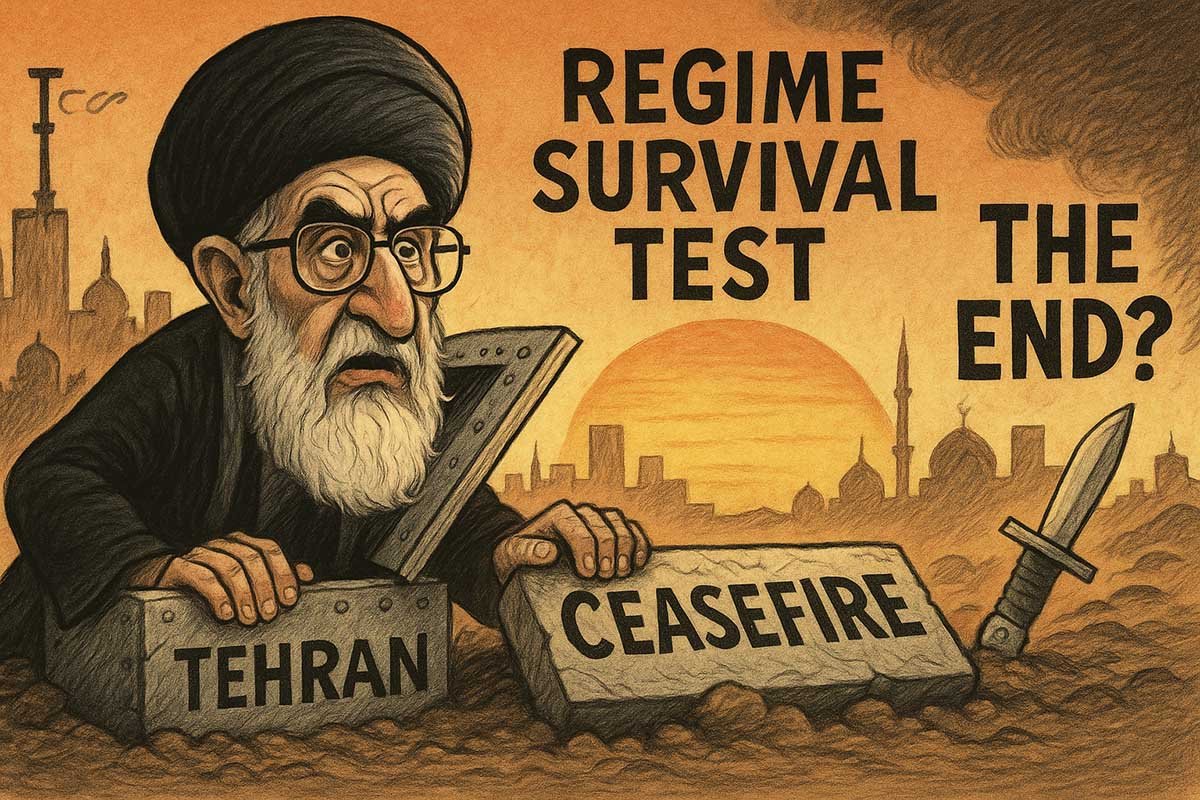Tehran is caught between anxious calm and acute political drama, as Iran’s Supreme Leader Ali Khamenei emerges from the shadows of the most intense phase of conflict with Israel and the United States. The headlines across Iranian and international media now echo a singular question: has the regime’s sun finally begun to set, or will Khamenei’s system, built on repression and crisis, weather yet another existential storm?
In the aftermath of the US- and Israel-led onslaught, multiple sources report that Khamenei’s government is publicly embracing the ceasefire as a strategic “achievement.” Yet the cracks are already visible beneath the surface. Analysts point to the Supreme Leader’s increasing isolation, with reports suggesting he is “now reportedly sheltering in a bunker” as elite factions jostle for control and loyalists question the cost of perpetual crisis. Even as official outlets promote images of defiant resilience, international observers and dissident voices are calling this a “regime survival test”—a phrase once reserved for historic moments, now made routine by Khamenei’s leadership style.
Behind the curtain, speculation on succession has reached fever pitch. According to Reuters, plans for what comes after Khamenei have “hit top gear,” with trusted insiders and family members elevated or sidelined in quick succession. For a leader who has ruled by paranoia, this phase looks less like a managed transition and more like an endgame scramble. The Washington Institute and MEForum both document the regime’s historic reliance on internal repression and a permanent sense of siege; now, the scaffolding itself seems to shake.
The truce, though welcomed by many Iranians exhausted by war, is a fragile thing. Iranian dissidents and opposition figures are openly calling for an end to Khamenei’s rule, while regime loyalists warn of dire consequences if the “enemy” is not punished for recent attacks. The Sentinel Assam relays the Supreme Leader’s rhetoric promising retribution, but fatigue and doubt pervade both elite and street.
International analysts are increasingly blunt: Khamenei’s regime, while battered, is not yet broken. The New Yorker asks whether the theocracy can survive a legitimacy crisis this acute. The Spectator posits the more pointed question: will Khamenei accept that it’s over, or simply double down?
The succession question casts the longest shadow. Livemint and MSN report on possible heirs, but warn that none have the same capacity for total control—a dangerous variable as factions calculate their chances in a post-Khamenei Iran.
For now, Tehran’s battered calm feels like a prelude, not a resolution. Khamenei has weathered crises before, but never with so many knives out in the open. For the first time in decades, both friends and enemies are asking if Iran’s strongman has finally run out of time—or if the next crisis will once again extend his reign by default. One thing remains certain: Iran’s future, for all the ceasefire declarations, is far from settled.
